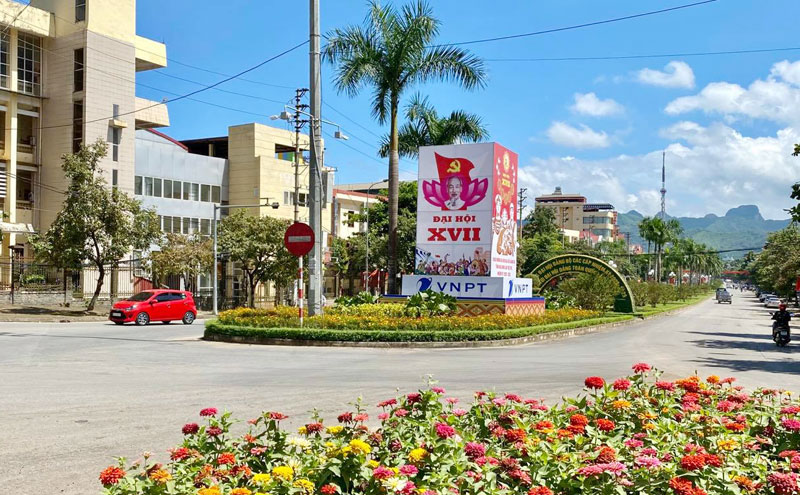
(HBO) – Preparations for the 17th Party Congress of Hoa Binh province for the 2020-2025 tenure have been actively made over the past few weeks, with communications activities and landscape improvement carried out.
 Tran Hung Dao street in Hoa Binh province colourfully
decorated in celebration of the 17th provincial Party Congress.
Tran Hung Dao street in Hoa Binh province colourfully
decorated in celebration of the 17th provincial Party Congress.
To date, all streets and roads in Hoa Binh city
have been adorned with flags and flowers. Hundreds of large billboards, flags,
posters and banners marking all-level Party congresses and the provincial Party
Congress have been erected. The messages celebrating Party congresses stand out
at public places like the province’s Cultural Palace, the T-junction of Ky Son
ward, the cross-road of Tan Thinh ward, the Hoa Binh Square intersection and
the T-junction of An Duong Vuong – Tran Hung Dao streets, so as to easily
access local residents.
The joyful atmosphere can be felt across the
city as the national flag is hung in all residential areas and local houses.
Besides, landscape improvement has been promoted
by the Hoa Binh Urban Environment JSC. All of the firm’s employees have been
mobilised to keep local streets green, clean and beautiful by increasing waste
collection, pruning trees, planting flowers, and installing more lamps at some
locations, from the expanded stretch of Chi Lang street, Tran Hung Dao street
to Truong Han Sieu street and Thinh Lang avenue./.
The People’s Committee of Lac Son district held a ceremony on April 28 to receive the provincial relic certificate for the ancient rock carving site at Suoi Co stream, located in My Thanh commune.
A special music show titled "The country is in the fullness of joy” has been held at Hoa Binh Square in Hoa Binh city in celebration of the 50th anniversary of the liberation of the South and national reunification (April 30, 1975–2025).
The People's Committee of Lo Son commune, Tan Lac district, has organised the local annual traditional stream fishing festival on April 19 - 20.
As a land deeply intertwined with human history and Vietnam’s millennia-long journey of nation-building and defence, Hoa Binh is often revered for its epic tales and legends.
Residents of Hoa Binh boast a rich cultural identity, reflected in their unique language, traditional attire, customs, and folk melodies – described as "sweet as honey, clear as a mountain stream.”
Lac Son district’s Vu ban town held the 2025 Truong Kha temple festival on April 12–13 (the 15th–16th days of the third lunar month). Since its revival in 2019, the festival has been organised every three years, preserving valuable intangible heritage while meeting the community’s cultural and spiritual needs.



 Tran Hung Dao street in Hoa Binh province colourfully
decorated in celebration of the 17th provincial Party Congress.
Tran Hung Dao street in Hoa Binh province colourfully
decorated in celebration of the 17th provincial Party Congress.